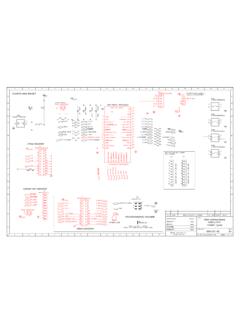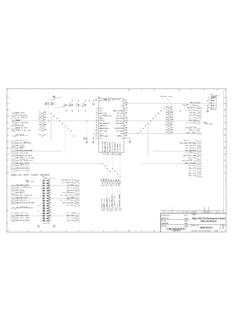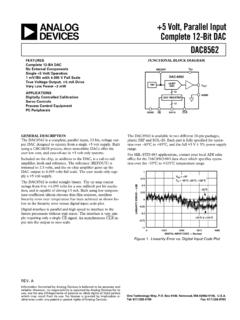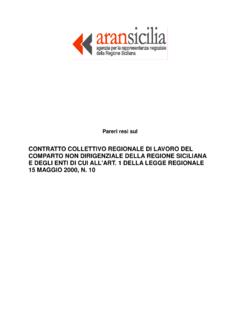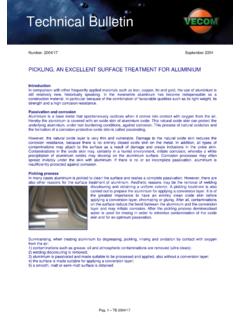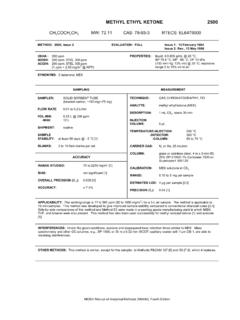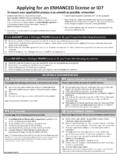Transcription of U-Boot Reference Manual - Digi International
1 U-Boot Reference Manual 90000852_K 2 Digi International Inc. 2011. All Rights Reserved. The Digi logo is a registered trademark of Digi International , Inc. All other trademarks mentioned in this document are the property of their respective owners. Information in this document is subject to change without notice and does not represent a commitment on the part of Digi International . Digi provides this document as is, without warranty of any kind, either expressed or implied, including, but not limited to, the implied warranties of fitness or merchantability for a particular purpose. Digi may make improvements and/or changes in this Manual or in the product(s) and/or the program(s) described in this Manual at any time. This product could include technical inaccuracies or typographical errors.
2 Changes are periodically made to the information herein; these changes may be incorporated in new editions of the publication. Digi International Inc. 11001 Bren Road East Minnetonka, MN 55343 (USA) +1 877 912-3444 or +1 952 912-3444 3 Contents 1. Conventions used in this Manual .. 5 2. Acronyms and Abbreviations .. 6 3. Introduction .. 7 What is a boot loader? .. 7 What is U-Boot ? .. 7 Features of U-Boot .. 7 Customizable footprint .. 7 Monitor .. 7 Variables .. 8 Ethernet and USB .. 8 Numbers .. 8 The boot process .. 8 4. U-Boot commands .. 9 Overview .. 9 Built-in commands .. 9 Information commands .. 10 MII commands .. 11 Network commands .. 11 USB commands .. 12 Memory commands .. 12 Serial port commands .. 14 I2C commands.
3 14 Environment variables commands .. 14 5. Environment variables .. 15 Overview .. 15 Simple and recursive variables .. 15 Scripts .. 15 System variables .. 16 Common system variables .. 16 Dynamic variables .. 17 User keys .. 17 Protected variables .. 18 6. Bootscript .. 19 Bootscript process .. 19 Creating a bootscript .. 19 Creating a bootscript in Windows .. 20 Configuration for launching the bootscript .. 20 Bootscript restrictions .. 20 7. boot commands .. 21 Overview .. 21 Reading images into RAM .. 21 From Ethernet .. 21 From USB .. 21 From MMC .. 21 From flash .. 22 Booting images in RAM .. 22 Direct booting .. 23 boot examples .. 23 Automatic booting .. 23 8. Using NVRAM .. 25 4 The 'flpart' command .. 25 A partition table entry.
4 25 Changing the partition table .. 26 The intnvram command .. 26 Mappings of variables .. 28 9. Firmware update commands .. 29 Overview .. 29 Updating flash with images in RAM .. 29 Direct updating .. 30 Update limits .. 31 10. Customize U-Boot .. 32 Overview .. 32 JTAG Console .. 32 Silent 33 Splash screen support .. 33 Enable splash screen support in U-Boot .. 34 Creating a splash partition .. 34 Uploading a splash image .. 35 Initialize video interface .. 35 11. U-Boot development .. 37 12. Troubleshooting .. 38 Work with FIMs on NS921x based modules .. 38 Problems booting from NFS .. 38 USB memory sticks .. 38 5 1. Conventions used in this Manual This list shows the typographical conventions used in this guide: Style Used for file and directory names, variables in commands, URLs and new terms.
5 Style In examples, to show the contents of files, the output from commands, the C code. Variables to be replaced with actual values are shown in italics. Style Variable's names and commands. In examples, to show the text that should be typed literally by the user. # A prompt that indicates the action is performed in the target device. $ A prompt that indicates the action is performed in the host computer. <field> A mandatory field that must be replaced with a value [field] An optional field [a|b|c] A field that can take one of several values This Manual also uses these frames and symbols: This is a warning. It helps solve or to avoid common mistakes or problems This is a hint. It contains useful information about a topic $ This is a host computer session $ Bold text indicates what must be input # This is a target session # Bold text indicates what must be input This is an excerpt from a file Bold text indicates what must be input 6 2.
6 Acronyms and Abbreviations BIOS Basic Input Output System CPU Central Processing Unit FAT File Allocation Table I2C Inter-Integrated Circuit MBR Master boot Record MII Media Independent Interface NVRAM Non Volatile RAM OS Operating System PC Personal Computer RAM Random Access Memory TFTP Trivial File Transfer Protocol USB Universal Serial Bus 7 3.
7 Introduction What is a boot loader? Microprocessors can execute only code that exists in memory (either ROM or RAM), while operating systems normally reside in large-capacity devices such as hard disks, CD-ROMs, USB disks, network servers, and other permanent storage media. When the processor is powered on, the memory doesn't hold an operating system, so special software is needed to bring the OS into memory from the media on which it resides. This software is normally a small piece of code called the boot loader. On a desktop PC, the boot loader resides on the master boot record (MBR) of the hard drive and is executed after the PC's basic input output system (BIOS) performs system initialization tasks. In an embedded system, the boot loader s role is more complicated because these systems rarely have a BIOS to perform initial system configuration.
8 Although the low-level initialization of the microprocessor, memory controllers, and other board-specific hardware varies from board to board and CPU to CPU, it must be performed before an OS can execute. At a minimum, a boot loader for an embedded system performs these functions: Initializing the hardware, especially the memory controller Providing boot parameters for the OS Starting the OS Most boot loaders provide features that simplify developing and updating firmware; for example: Reading and writing arbitrary memory locations Uploading new binary images to the board's RAM from mass storage devices Copying binary images from RAM into flash What is U-Boot ? U-Boot is an open-source, cross-platform boot loader that provides out-of-box support for hundreds of embedded boards and many CPUs, including PowerPC, ARM, XScale, MIPS, Coldfire, NIOS, Microblaze, and x86.
9 For more information about the U-Boot project see and Features of U-Boot Customizable footprint U-Boot is highly customizable to provide both a rich feature set and a small binary footprint. Monitor U-Boot has a command shell (also called a monitor) in which you work with U-Boot commands to create a customized boot process. 8 Variables U-Boot uses environment variables that can be read or written to and from non-volatile media. Use these variables to create scripts of commands (executed one after the other) and to configure the boot process. Ethernet and USB Because U-Boot can download a kernel image using either Ethernet or USB, no flash programming is needed to test a new kernel. This prevents the deterioration of flash caused by repeated flash erases and writes.
10 Numbers Numbers used by U-Boot are always considered to be in hexadecimal format. For example, U-Boot understands number 30100000 as 0x30100000. The boot process After power-up or reset, the processor loads the U-Boot boot loader in several steps. The processor does these steps: Executes a primary bootstrap that configures the interrupt and exception vectors, clocks, and SDRAM Decompresses the U-Boot code from flash to RAM Passes execution control to the U-Boot U-Boot does these steps: Configures the Ethernet MAC address, flash, and, serial console Loads the settings stored as environment variables in non-volatile memory After a few seconds (a length of time you can program), automatically boots the pre-installed kernel To stop the automatic booting (autoboot) of the pre-installed kernel, send a character to the serial port by pressing a key from the serial console connected to the target.

